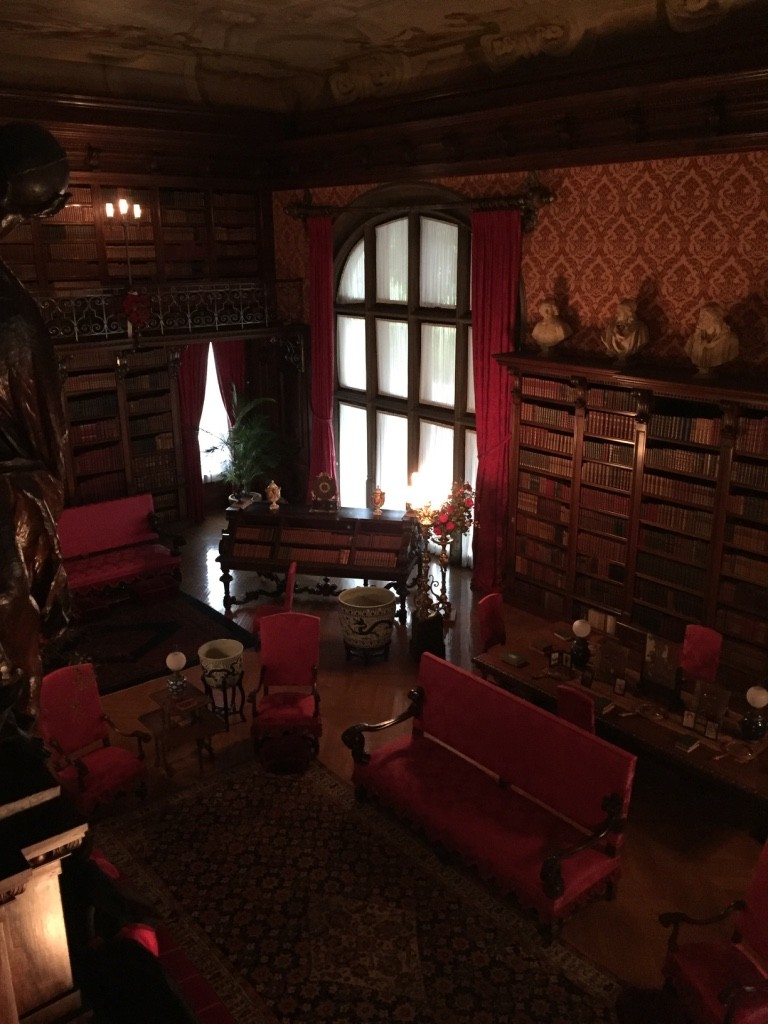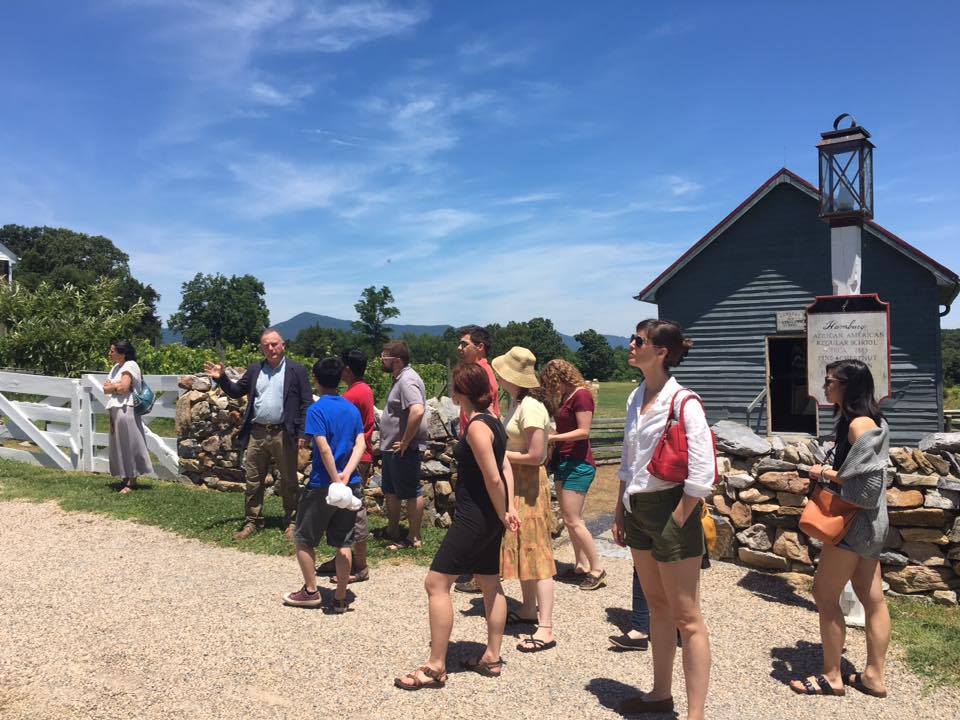Collecting the South
Touring some of the dazzling homes and museums of Virginia, North & South Carolina, and Georgia, our June field study trip introduced the rising second years to multiple complex stories about collecting. One of the most striking features of our journey was to observe the many ways that southerners contributed – and continue to contribute – towards the construction of regional identity through the familiar but nonetheless profound and creative act of collecting.
As is to be expected, certain sites appear to be direct attempts to transplant Anglo-European precedents of collecting and home building into the American South. Drayton Hall, although stripped of its furnishings, stands as a testament to the early colonists’ continued aesthetic connections to England. Positioned along South Carolina’s Ashley River, the estate, as noted by our tour guide, was fundamentally conceived as an English country house. At Biltmore, even as late at the 1890s, George Washington Vanderbilt II took his cue from the Old World while building his collections of books, tapestries, paintings, and architectural components – among many other objects – to fill his monumental French Renaissance palace nestled into the Appalachian Mountains outside Asheville, North Carolina.
Drayton Hall, outside Charleston. Images by Emelie Gevalt and http://www.draytonhall.org/
The Library and Stairwell at Biltmore, Asheville, NC. Images by Emelie Gevalt and http://www.biltmore.com/
However, many of the other homes and collections we saw expressed the complexity and distinctiveness of local culture in uniquely southern ways. One of our first stops on the trip was the Museum of Early Southern Decorative Arts in Winston-Salem, North Carolina—an excellent place to begin, both physically and intellectually, when investigating southern collecting history. At MESDA in the 1950s, antique dealer and collector Frank L. Horton set out to correct negative misconceptions about the history of southern decorative arts—namely, the erroneous idea infamously put forth by Joseph Downs, that there wasn’t much to speak of. By building a pioneering collection of characteristically southern furniture and objects, both high style and vernacular, Horton undeniably demonstrated the rich, research-worthy material life of the original southern British colonies and established an important center at MESDA to continue investigations of the topic.
Left: Court Cupboard, 1660-1680, Probably Jamestown, MESDA, Gift of Frank L. Horton. Right: Hannah Dart, painted by Jeremiah Theus c. 1765, MESDA purchase fund. Images: http://www.mesda.org/
For further discussion of Frank Horton’s legacy, see the below article by Luke Beckerdite: http://www.chipstone.org/article.php/557/American-Furniture-2006/The-Life-and-Legancy-of-Frank-L.-Horton:-A-Personal-Recollection
At the Luray Valley Museum, Rod and Isabel Graves move forward in the spirit of Frank Horton. Operating within a more focused region, the Graves are actively compiling an extraordinary catalogue of Shenandoah Valley objects and structures—especially those made by Moravian craftsmen. Nearby auctioneers Jeff and Beverly Evans further inspire interest in the region’s material culture through their business and personal collection. Through their experience and infectious enthusiasm, they build specialized knowledge in the collecting community concerning everything from Shenandoah Valley stoneware to local painted furniture.
Above: a special tour of the Luray Valley Museum with the Rod and Isabel Graves. Below: an example of Moravian craftsmanship in a painted blanket chest by Johannes Spitler, from the Luray Valley Museum’s collection. Images: WPAMC Fellows and http://luraycaverns.com/discover/lurayvalleymuseum
Examining Shenandoah Furniture with Jeff Evans. Image: WPAMC Fellows. https://www.jeffreysevans.com/
At the Museum of the Cherokee Indian, Sonny Ledford and Mike Rowe, Jr. gave us a special tour. After viewing the museum’s permanent exhibitions on Cherokee history, a trip into the storage warehouse gave us an even greater sense for the museum’s extraordinary compendium of artifacts relating to Cherokee life in the region. In its mission to “perpetuate the history, culture, and stories of the Cherokee people,” the museum has built a rich and broad collection from the Paleolithic era into the 21st century, including clothing, tools, games, pottery, baskets, jewelry, and photographic and written archives. Interestingly, our guide commented that the museum even serves as preservation space for some articles unrelated to Cherokee heritage. For instance, a Japanese Samurai helmet sits on one shelf in the warehouse. In its aim to provide a service to the community, the museum has become a repository for a range of objects deemed worth preserving by local donors. Our experiences here added another layer to the already complex picture of regional identity as told through material culture.
In the collections warehouse with collections manager Mike Rowe, Jr, at the Museum of the Cherokee Indian. Image: WPAMC Fellows. http://www.cherokeemuseum.org/
On one of our final stops we visited the Charleston Museum. Founded before the American Revolution, this institution began in the Anglo-European tradition, and, according to curator Grahame Long, was intended as a sort of “little brother” to the British Museum. During the intervening centuries, however, the museum has grown into a highly specialized regional collection, representing Charleston’s multi-faceted history through local natural specimens as well as Charleston-made art objects and historical artifacts. Through such examples we see the power of collecting not only to educate us about regional history and identity, but also to help construct, define, and transform these conceptions as they change over time.
Above: a historic image of the Charleston Museum’s exhibitions. Below: a view of the museum’s storage space, showing the sheer volume of artifacts collected over the course of the institution’s history. Images: https://www.charlestonmuseum.org/
By Emelie Gevalt, WPAMC Class of 2017













Leave a Reply